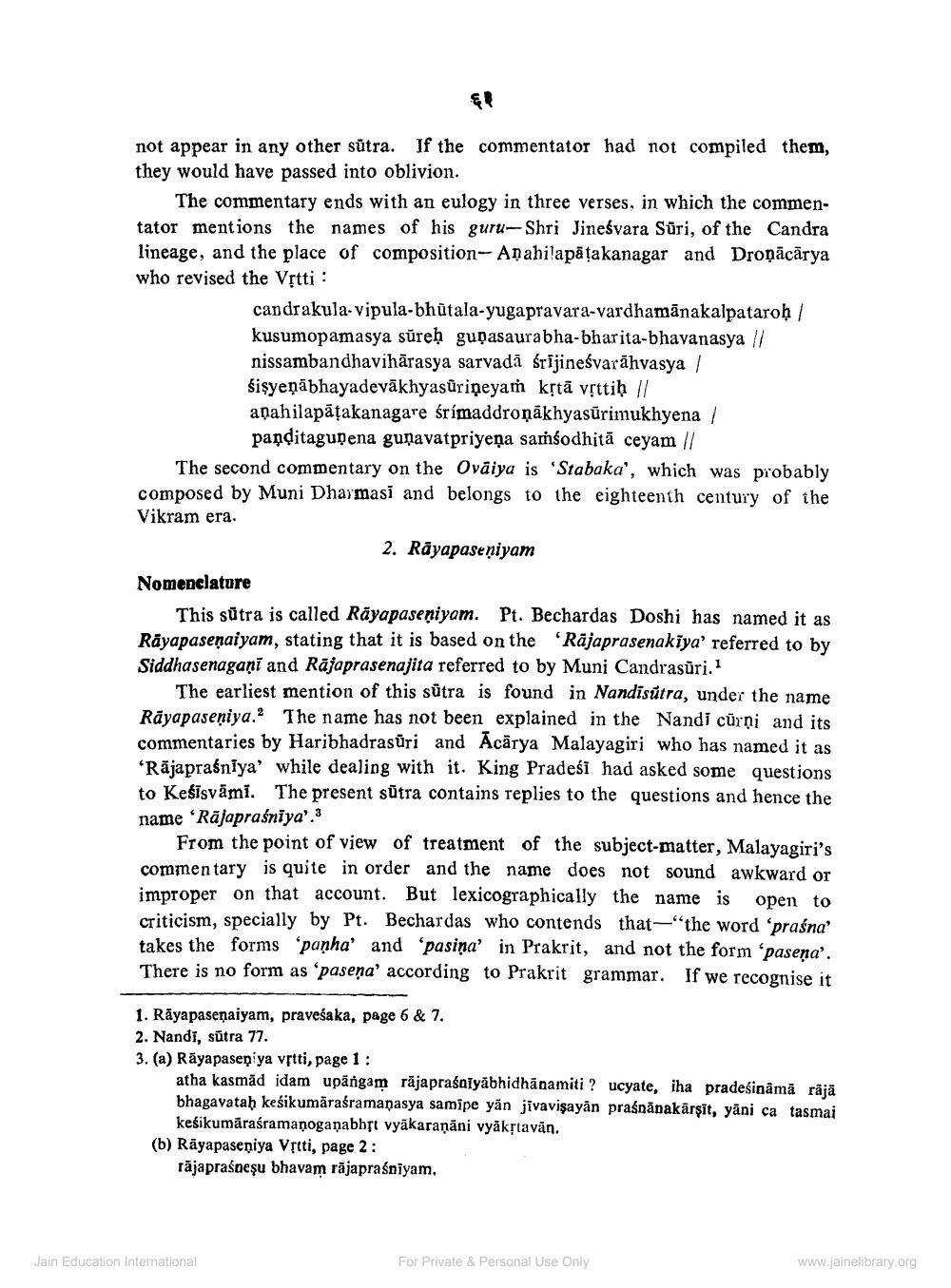________________
not appear in any other sūtra. If the commentator had not compiled them, they would have passed into oblivion.
The commentary ends with an eulogy in three verses, in which the commentator mentions the names of his guru-Shri Jineśvara Suri, of the Candra lineage, and the place of composition- Anahilapāțakanagar and Droņācārya who revised the Vștti:
candrakula-vipula-bhūtala-yugapravara-vardhamānakalpataroh / kusumopamasya süreh guộasaurabha-bharita-bhavanasya // nissambandhavihārasya sarvadā śrijineśvarāhvasya / šisyeņābhayadevākhyasūriņeyam kstā vịttiḥ 11 anahilapāțakanagare śrímaddroņākhyasūrimukhyena /
panditagupena gunavatpriyeņa samsodhitā ceyam // The second commentary on the Ovãiya is 'Stabaka', which was probably composed by Muni Dharmasi and belongs to the eighteenth century of the Vikram era.
2. Rāyapaseniyam Nomenclature
This sūtra is called Rāyapaseniyam. Pt. Bechardas Doshi has named it as Rayapaseņaiyam, stating that it is based on the 'Rājaprasenakiya' referred to by Siddhasenagani and Rājaprasenajita referred to by Muni Candrasûri."
The earliest mention of this sütra is found in Nandisutra, under the name Rāyapaseniya. The name has not been explained in the Nandi cūrni and its commentaries by Haribhadrasūri and Acārya Malayagiri who has named it as "Rājapraśniya' while dealing with it. King Pradeśi had asked some questions to Kesīsvāmi. The present sutra contains replies to the questions and hence the name 'Rajapraśniya'.3
From the point of view of treatment of the subject matter, Malayagiri's commentary is quite in order and the name does not sound awkward or improper on that account. But lexicographically the name is open to criticism, specially by Pt. Bechardas who contends that the word 'praśna' takes the forms 'panha' and 'pasina' in Prakrit, and not the form 'pasena'. There is no form as 'pasena' according to Prakrit grammar. If we recognise it
1. Rāyapaseņaiyam, praveśaka, page 6 & 7. 2. Nandi, sūtra 77. 3. (a) Rāyapasep ya vftti, page 1 :
atha kasmăd idam upāngam rājaprašatyābhidhānamiti? ucyate, iha pradeśināmā räjä bhagavatah kesikumāraśramanasya samipe yan jivavisayān praśnānakärşit, yāni ca tasmai
kesikumāraśramaņoganabbst vyäkaraṇāni vyākstavān. (6) Rāyapaseniya Vseti, page 2:
rājapraśneşu bhavam rājapraśniyam.
Jain Education International
For Private & Personal Use Only
www.jainelibrary.org




